Thermal Camera Experimentations
We experiment with tools that help relate to data and infrastructures in embodied ways such as data walks and field studies using thermal cameras. By engaging in these activities we explored how to extend our sensory apparatus, creating the conditions to notice invisible relations and redefine visible ones.
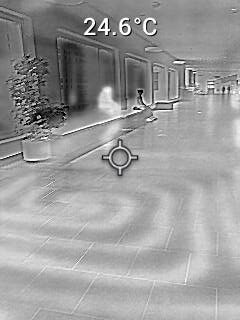
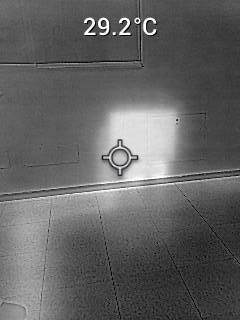
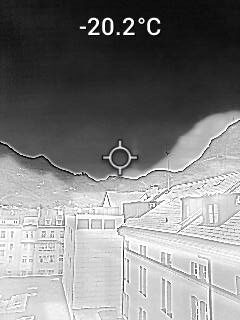
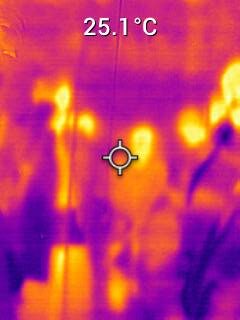
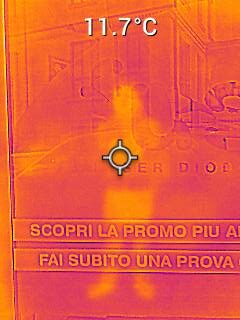
How does it work?
Warm objects emit a specific kind of light: the infrared, which is not perceivable by the naked human eye. However, thermal cameras can enhance human sensorial experiences of their surroundings. Thermal cameras have specific sensors sensible to long infrared waves and a screen that translates these waves into color-coded images (from red-warm to blue-cold). Since it is a photographic tool, mirror surfaces can lead to misperceptions, in fact, even if the surface is cold, it can reflect the light of warm objects.
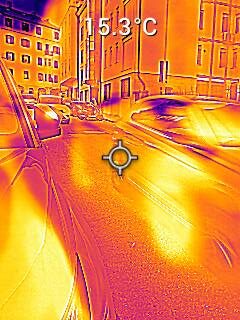

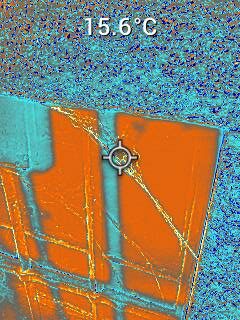
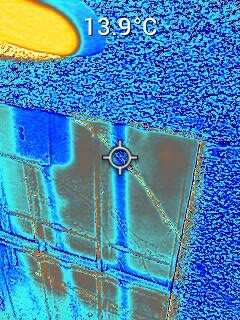
Is this camera shooting?
The Thermal Camera we used for the explorations was a Flir TG267, lent by colleagues of the Friction Lab project (Faculty of Design, unibz). This thermal camera is a professional tool to measure heat with precision in terms of temperature and position.
The results are interesting from a data collection perspective; however, we experienced it as not ideal for experiments “in the wild”. The camera has been designed for a specific use context (e.g., industrial settings, building engineering) and might be not well-suited for gathering data in public spaces. Its shape and interaction (looking, pointing, and clicking) might be intimidating and create confusion about its purpose.
Notes on the chromatic system
The colour-code displayed can be set in the menu and have different chromatic visualisations, but the most important thing is that the colour codes are not absolute, but relative to the warmest object on the field.
Observations
The the the bike, the bio-object and the chair
From some photos of people moving around the university there was something notable: under the lens of a thermal camera, bikers become one whole thing with their bike.
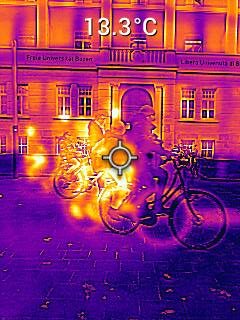
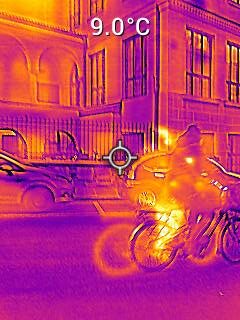
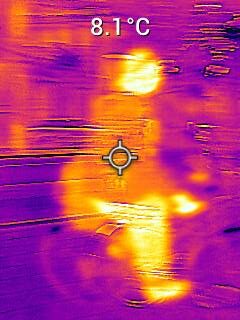
This seems the visual representation of a paragraph written by Brian O’Nolan in the 1940, later published under the pseudonym Flann O’Brien in the novel The Third Policeman:
The gross and net result of it is that people who spent most of their natural lives riding iron bicycles over the rocky roadsteads of this parish get their personalities mixed up with the personalities of their bicycle as a result of the interchanging of the atoms of each of them and you would be surprised at the number of people in these parts who nearly are half people and half bicycles.
Flann O’Brien, The Third Policeman, 1967.
Photographing some colleagues in the university and in the Fablab it was even more evident that, under the lens of a thermal camera, people can become one whole thing with the tools they are using.
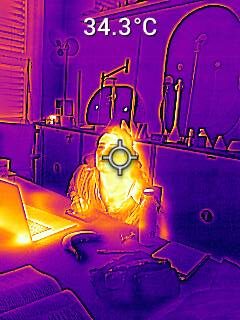
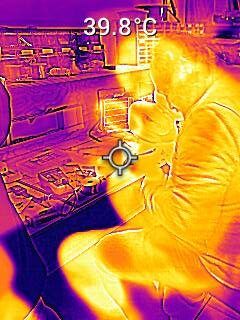
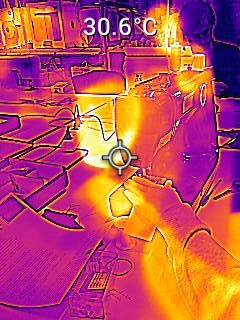
This resonates with Kantor’s theatre theories, in particular with the concept of Bio-object:
BIO-OBJECTS were not props which the actors used. They were not “decorations” in which you “act”. They made indivisible wholes with the actors. They exuded their own autonomous “lives”, not related to the FICTION (content) of the play.
Tadeusz Kantor, ‘Further Development: The Object’, trans. William Brand, unpublished manuscript in Cricoteka – the Centre for the Documentation of the Art of Tadeusz Kantor.
In their fiction these two authors emphasized the user-technology entanglement, a big subject of study for the field of Human-Computer Interaction. With the thermal camera these theories can become visual metaphors.